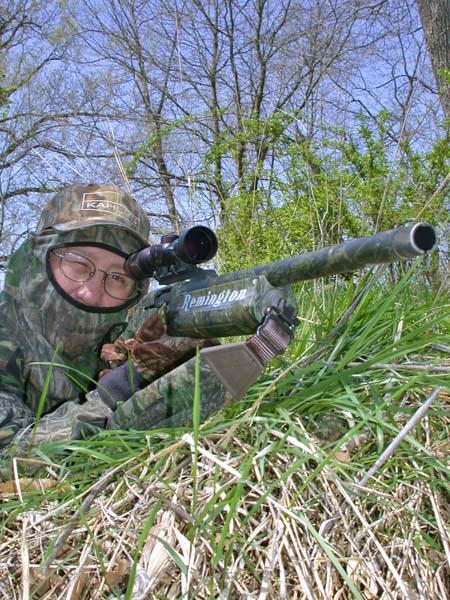
John Phillips | April 16, 2012
Mossy Oak has talked to some of the company’s professional hunters to learn how to set-up on turkeys. Here are some of their suggestions. Realize for success during this spring turkey-hunting season that you need to study a turkey’s schedule. First you need to realize that a gobbler doesn’t like to cross water – above it or in it, walk through heavy cover or downhill, go-under a fence or fly over it, move-into an area where he’s encountered danger previously or go to a region where he thinks another gobbler will beat him in a fight. If a sportsman sets-up in any of these areas and tries to call-in a gobbler, chances are good that the bird won’t come to him. However, turkeys do walk in clean woods with little underbrush and in fields where he can see for great distances and prefers walking on flat ground whenever possible. A turkey follows a regular routine, and if you can determine that pattern, you’ll probably bag the bird. He’ll roost in the same tree, fly-down in the same direction, try to mate in his strutting zones and feed in the same fields.
For the most success when hunting turkeys:
* don’t set-up too close to the turkey, so that the bird spots you and moves-away. For instance, a turkey may gobble in the direction of a hunter, turn-around on the limb, face the opposite direction and gobble away from the hunter, therefore sounding farther away than he actually is. A good rule of thumb is to always set-up farther away from the bird than you think you should.
* understand when to move and when to sit still, although often the hunter must set-up two or three times to call a turkey. Many hunters spook turkeys when, after a few minutes of calling, the birds don‘t come in, the hunter gets-up and moves to another location, spooking a hesitant gobbler.
* realize that sometimes you must move or else you won’t get a gobbler. Maybe there’s a creek or ditch of which you’re not aware. Perhaps the gobbler has encountered some hens and started to walk-out of the area. The turkey may be call-shy, because of other hunter encounters. Or, the ole bird may just be ornery and decide, “If that hen wants to be bred, she’ll have to come find me.”
* change calls as you move, so hopefully, the gobbler will think that there’s yet another hen that’s out looking for him. Sometimes, an aggressive hunter will change his position several times. But by moving, he often spooks the tom. Experienced hunters say that patience bags more gobblers than running and gunning.





























